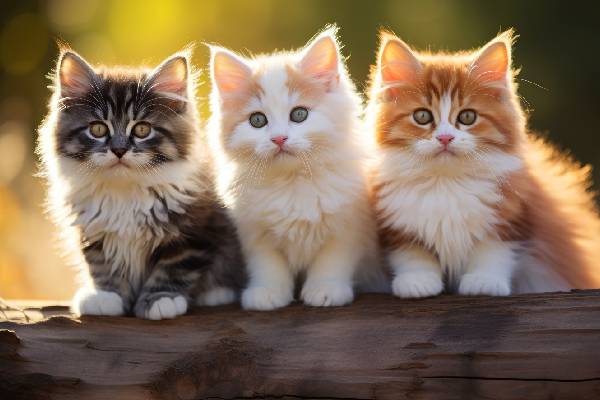Table of Contents
Introduction
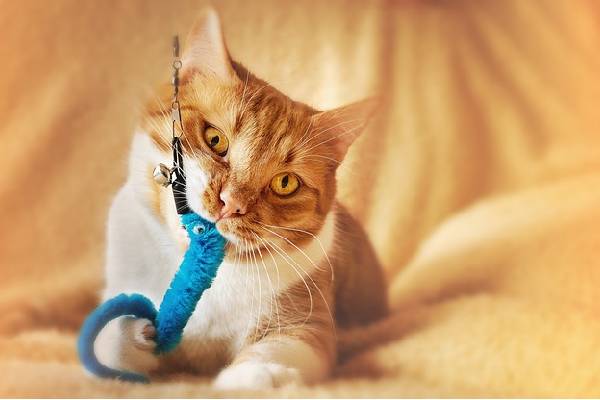
Cute Cats have been beloved companions to humans for thousands of years, their charm and appeal transcending cultures and generations. These enigmatic creatures, known for their grace, independence, and affectionate nature, have a way of captivating our hearts. Whether you’re a seasoned cat owner or someone considering bringing a feline friend into your home, it’s easy to see why cats are among the most popular pets worldwide.
One of the most fascinating aspects of cats is their diversity. There are more than 70 officially recognized cat breeds, and each has special qualities of its own. From the delicate, doe-eyed Persian to the sleek, athletic Bengal, and the enormous, majestic Maine Coon, there’s a cat breed to suit every personality and lifestyle.
Some cats are known for their luxurious fur, while others are hairless; some are small and dainty, while others are robust and powerful. This wide range of breeds allows cat enthusiasts to find a feline friend that matches their aesthetic preferences and personal needs.
In this article, we will delve into the world of cats through three main lenses: “cute cats,” “big cats as pets “and” what colors can cats see.” Each of these topics highlights a different aspect of the feline allure:
Cute Cats:
The concept of “cute” is often subjective, but certain cat breeds have universally recognized traits that make them irresistibly adorable. Whether it’s their big, round eyes, tiny noses, or playful personalities, cute cats have a special place in our hearts. We’ll explore some of the cutest cat breeds and discuss why they are so beloved.
Big Cats as Pets:
While many people are familiar with small, cuddly cats, there’s also a growing fascination with larger domestic cat breeds. These “big cats,” such as the Maine Coon or the Savannah, are not only impressive in size but also possess unique traits that set them apart from their smaller counterparts. We’ll examine what it’s like to own one of these magnificent creatures and the considerations that come with it.
What Colors Can Cats See?
Cats’ vision is another intriguing aspect of their biology. Unlike humans, who can see a broad spectrum of colors, cats perceive the world differently. Understanding how cats see color not only gives us insight into their daily experiences but also helps us create a more enriching environment for them. We’ll delve into the science of cat vision and explore how it affects their behavior.
As we journey through the world of cats, we’ll uncover fascinating facts, answer common questions, and provide insights into what makes these animals so special. Whether you’re drawn to the cuteness of kittens, the grandeur of big cats, or the mysteries of feline senses, this article will offer something for every cat lover.
The Adorable World of Cute Cats
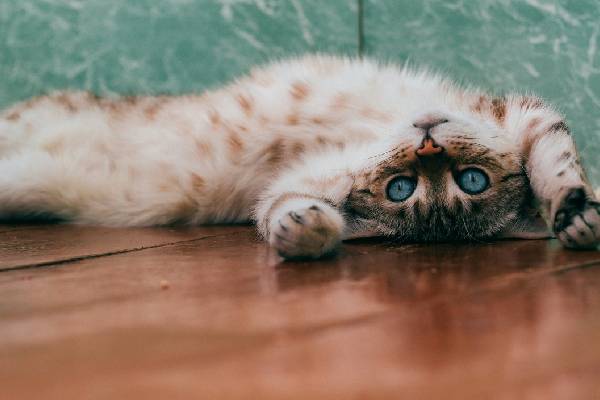
Cats have a unique ability to captivate us with their cuteness, often eliciting an “aww” from even the most stoic observers. But what exactly makes a cat cute? The answer lies in a combination of physical features and personality traits that are both scientifically and culturally ingrained in our perception of what is adorable.
What Makes a Cat Cute?
Physical Features:
Big Eyes:
One of the most universally recognized traits of cuteness in cats is their large, round eyes. Cats’ eyes are proportionally bigger than those of many other animals, giving them a childlike appearance. This triggers a nurturing response in humans, as we instinctively associate large eyes with babies and vulnerability.
Small Noses:
A cat’s small, delicate nose also contributes to its overall cuteness. The petite nose, often paired with a soft, rounded face, creates a gentle and innocent expression that is hard to resist.
Fluffy Fur:
The texture and length of a cat’s fur can greatly enhance its cuteness. Fluffy, soft fur is often associated with comfort and warmth, making cats appear more cuddly and approachable. Breeds like the Persian or Ragdoll, known for their long, luxurious coats, are prime examples of this.
Personality Traits:
Playfulness:
A playful cat is undeniably cute. Watching a kitten chase after a toy, pounce on invisible prey, or bat at a dangling string is a delightful experience that showcases their boundless energy and curiosity. This playfulness often mirrors the behavior of young children, adding to their charm.
Affection:
Cats that seek out affection from their owners, whether by curling up in their laps, rubbing against their legs, or purring contentedly, are often seen as especially cute. This display of warmth and companionship strengthens the bond between cat and owner, making the cat even more endearing.
What is the Cutest Breed of Cat?
When it comes to the cutest breed of cat, opinions vary, but certain breeds consistently top the list due to their physical features and temperament.
Persian:
Known for their large, expressive eyes, flat faces, and thick, flowing fur, Persian cats are often cited as one of the cutest breeds. Their calm and gentle nature only adds to their appeal, making them a favorite among cat lovers.
Scottish Fold:
The Scottish Fold’s distinctive folded ears give it an owl-like appearance, which many find irresistibly cute. Combined with their round faces and wide eyes, these cats have a uniquely adorable look that sets them apart.
Ragdoll:
Ragdolls are known for their striking blue eyes and semi-long fur, which gives them a plush, toy-like appearance. Their docile and affectionate nature makes them not only cute but also incredibly lovable, as they often go limp like a ragdoll when picked up.
Each of these breeds has its own unique features that contribute to its cuteness, making them popular choices for those seeking an adorable feline companion.
What is the World’s Cutest Cat?
In the digital age, certain cats have gained worldwide fame for their cuteness, thanks to social media platforms like Instagram, YouTube, and TikTok. Millions of people follow these feline celebs, making their cuteness a worldwide sensation.
Grumpy Cat:
Perhaps one of the most famous cats in the world, Grumpy Cat (real name Tardar Sauce) became an internet sensation due to her permanently “grumpy” expression. Despite her seemingly displeased appearance, Grumpy Cat’s unique look made her an icon of internet culture, with her images being shared and memed across the globe.
Nala Cat:
Nala Cat holds the Guinness World Record for the most Instagram followers for a cat. With her big blue eyes and cross-eyed stare, Nala’s cuteness has captured the hearts of millions, making her one of the most beloved cats on social media.
Lil Bub:
Known for her distinctive “tongue out” look due to a genetic condition, Lil Bub became an internet darling for her unique appearance and sweet personality. Her cuteness, coupled with her inspiring story, made her a symbol of positivity in the pet community.
These cats, among others, have shown how social media can amplify a cat’s cuteness, turning them into global icons and spreading joy to millions of fans worldwide.
What is the Cutest Cat’s Name?
Choosing a name for a cute cat is an important task that reflects both the cat’s appearance and personality. Popular names often evoke images of softness, sweetness, and playfulness.
- Whiskers: A classic name that highlights one of a cat’s most distinctive features.
- Snowball: Perfect for a white, fluffy cat, this name emphasizes the cat’s soft and cuddly nature.
- Bella: A popular name that means “beautiful” in Italian, ideal for a cat with a lovely appearance.
- Mittens: Often used for cats with white paws, this name adds a touch of playfulness to a cat’s identity.
Trends in naming pets often follow human baby name trends, with many cat owners opting for names that are cute, trendy, and sometimes even humorous. Names like “Luna,” “Milo,” and “Oliver” have become popular choices, reflecting a shift towards more human-like names for pets.
Why Are Cats So Cute?
The science behind why humans find cats cute can be traced back to evolutionary biology. Humans are hardwired to respond positively to features that are associated with youth and vulnerability, such as large eyes, round faces, and small bodies. These “neotenous” features, which cats often possess, trigger a nurturing instinct in humans, similar to the way we respond to human infants.
Additionally, cats’ behavior, such as their playful antics, affectionate purring, and even their independent streak, appeals to our emotions. These traits create a complex and endearing relationship between cats and their owners, making them appear even cuter.
Evolutionary traits also play a role in why cats are appealing. Historically, cats’ ability to keep pests at bay made them valuable companions to humans, and their cute features likely contributed to their domestication. Over time, humans have selectively bred cats to enhance these cute characteristics, further reinforcing the bond between the species.
In conclusion, the world of cute cats is rich with diversity and delight. From their physical features to their personalities, and even their names, everything about cats is designed to capture our hearts. Whether you’re admiring a fluffy Persian or following a famous internet cat, the cuteness of cats is an undeniable and universally appreciated aspect of their charm.
Big Cats as Pets: Is It a Good Idea?
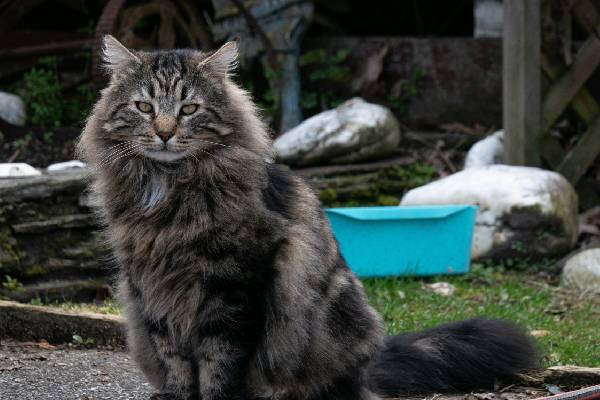
The allure of big cats as pets has grown significantly in recent years, with more people intrigued by the idea of owning a feline companion that is larger and more exotic than the average domestic cat.
These “big cats” are not the wild predators like lions or tigers but rather certain domesticated breeds that are significantly larger in size and often possess strikingly unique characteristics. While the idea of owning a big cat may seem appealing, it comes with its own set of challenges and considerations.
What are Big Cats?
Defining Big Cats
Big cats, in the context of domestic pets, refer to cat breeds that are notably larger than the average house cat. These breeds are often characterized by their impressive size, strength, and, in some cases, their resemblance to wild cats. While they are domesticated, their size and traits can make them stand out significantly from more common cat breeds.
Examples of Big Cats:
Maine Coon:
One of the biggest domestic cat breeds are Maine Coons, who are frequently referred to as the “gentle giants” of the cat world. They can weigh up to 18 pounds or more, with some males reaching lengths of up to 40 inches from nose to tail. Despite their size, Maine Coons are known for their friendly and sociable nature, making them popular among families.
Savannah:
A hybrid breed, the Savannah cat is a cross between a domestic cat and a serval, a wild African cat. Savannahs are known for their tall, slender build, large ears, and bold, spotted coat. They are highly energetic and intelligent, often requiring more stimulation and interaction than the average cat.
Bengal:
The Bengal cat is another breed that has a wild appearance, thanks to its ancestry, which includes the Asian leopard cat. Bengals are muscular, agile, and possess a striking coat with rosettes or spots that resemble those of a leopard. They are known for their high energy levels and love for play, often enjoying water and interactive toys.
Appeal of Owning a Larger-Than-Average Cat:
The appeal of big cats lies in their striking appearance and often unique personalities. Their size and exotic looks can make them feel more like a wild animal companion, which is appealing to those who want something beyond the ordinary in a pet. Additionally, big cats often have more pronounced, engaging personalities, which can be a draw for pet owners who want a more interactive and charismatic pet.
Pros and Cons of Owning Big Cats
Owning a big cat can be a rewarding experience, but it’s essential to understand the benefits and challenges that come with these impressive felines.
Pros of Owning Big Cats:
Impressive Appearance:
Big cats often have a majestic and regal appearance, with many of them resembling wild cats. This can make them a stunning addition to any household, drawing admiration from visitors and creating a sense of pride in ownership.
Unique Traits:
Big cats are not just large in size; they often have unique personality traits that set them apart from smaller breeds. For example, Maine Coons are known for their dog-like loyalty and ability to learn tricks, while Savannahs and Bengals are highly intelligent and require more complex interactions, which can be very rewarding for dedicated owners.
Social and Affectionate:
Despite their size, many big cat breeds are known for being affectionate and social with their owners. Maine Coons, for example, are often described as “gentle giants” because of their friendly and easy-going nature.
Cons of Owning Big Cats:
Space Requirements:
One of the significant challenges of owning a big cat is the need for more space. These cats require larger living areas to move around comfortably, and they often need bigger litter boxes, scratching posts, and beds. If you live in a small apartment, owning a big cat may not be feasible.
Special Care and Maintenance:
Big cats often require more maintenance than smaller breeds. Their larger size can lead to health issues such as joint problems or obesity, and they may require a specialized diet to stay healthy. Additionally, their grooming needs can be more intensive, especially for long-haired breeds like the Maine Coon.
Legal Considerations:
In some regions, owning hybrid cats like Savannah or Bengals may be subject to legal restrictions. These laws are in place to regulate the ownership of animals with wild ancestry to ensure they are adequately cared for and do not pose a risk to public safety. It’s essential to check local regulations before acquiring one of these breeds.
Famous Big Cats as Pets
Big cats have gained popularity not just among everyday pet owners but also among celebrities and public figures. These well-known individuals often showcase their big cats on social media, further fueling interest in these impressive breeds.
Celebrities and Their Big Cats:
Taylor Swift:
The pop superstar is known for her love of cats, and she owns two Scottish Folds, Olivia Benson and Meredith Grey, who have become celebrities in their own right. Although not the largest of breeds, Scottish Folds have unique folded ears and round faces that give them an adorable, almost big-cat-like appearance.
Martha Stewart:
The lifestyle guru owns a number of pets, including some larger cat breeds. Her collection of animals includes Persian cats, which, while not the largest, are often associated with luxury and grandeur due to their long, flowing coats and regal demeanor.
Well-Known Big Cats on Social Media:
Samson the Maine Coon:
Often dubbed “the largest cat in New York,” Samson is a Maine Coon who weighs over 28 pounds and measures about four feet in length. He has become an internet sensation, with his Instagram account boasting thousands of followers who are captivated by his impressive size and gentle nature.
Thor the Bengal:
Thor is a Bengal cat known for his striking appearance and beautiful, wild-like rosettes. His Instagram account showcases his adventurous and playful personality, along with his exotic looks, making him a favorite among cat enthusiasts online.
These famous big cats and their owners have helped popularize the idea of owning a large cat, showing that with the right care and environment, these majestic creatures can be wonderful pets.
Conclusion
Owning a big cat can be an exciting and rewarding experience, but it’s essential to be prepared for the challenges that come with it. These impressive felines require more space, special care, and, in some cases, consideration of legal regulations. However, for those who can meet their needs, big cats offer a unique and engaging companionship that few other pets can provide. Whether you’re drawn to the gentle giant Maine Coon or the exotic Savannah, big cats are sure to leave a lasting impression.
The Science Behind Cat Vision: What Colors Can Cats See?
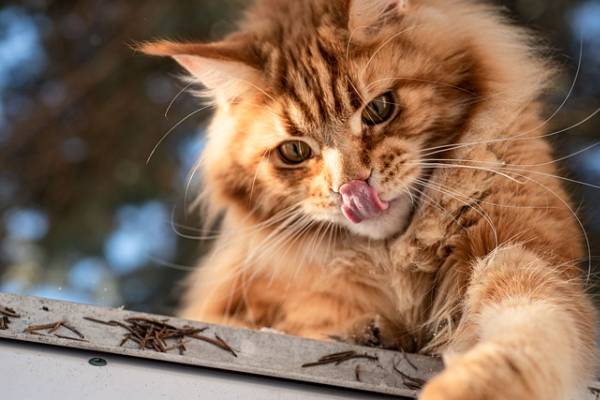
Cats are fascinating creatures, and one of the most intriguing aspects of their biology is how they see the world. While we may assume that cats perceive their surroundings in much the same way as we do, the truth is that their vision is quite different from ours. Understanding the science behind cat vision not only gives us insight into their daily experiences but also helps us create a more enriching environment for our feline friends.
Understanding Cat Vision
How a Cat’s Vision Differs from Humans
Cats’ vision has evolved to support their roles as hunters, particularly in low-light conditions. Unlike humans, who rely heavily on color vision and sharp detail, cats’ eyes are adapted for detecting movement and seeing in dim light, such as dawn and dusk, which are prime hunting times in the wild.
One of the key differences between cat and human vision is the structure of the retina, the layer of light-sensitive cells at the back of the eye. The retina contains two types of photo receptor cells: rods, which detect light intensity and movement, and cones, which detect color.
Humans have a higher concentration of cones, especially in the fovea, a small area of the retina responsible for sharp central vision. This allows us to see a wide range of colors and fine details, particularly in well-lit conditions.
Cats, on the other hand, have a higher concentration of rods and fewer cones. This means that while their vision is superior in low light and better at detecting motion, their color vision is limited, and they do not see fine detail as clearly as humans do.
Additionally, cats lack a fovea; instead, they have a structure called the “area centralis,” which is not as densely packed with cones. As a result, cats see the world as less vibrant and more blurry compared to humans.
Colors Cats Can and Cannot See
Cats are not completely colorblind, but their perception of color is much more limited than that of humans. While humans have three types of cones that allow us to see a full spectrum of colors, including red, green, and blue, cats have only two types of cones. This gives them a vision that is somewhat comparable to a person with red-green color blindness.
Cats can see shades of blue and green quite well, but red, orange, and brown are much harder for them to distinguish. These colors appear more muted or even grayish to cats. For example, a bright red ball might appear as a dull brown or dark gray object to a cat. This limited color palette does not hinder them in the wild, as their eyes are more attuned to detecting movement and contrasts, which are more important for hunting than vibrant colors.
Cats have good night vision despite having poor color vision. They can see in light levels six times lower than what a human needs to see, thanks to the high number of rods in their retinas and a reflective layer behind the retina called the tapetum lucidum. The tapetum lucidum reflects light that passes through the retina back into the eye, giving cats’ eyes their characteristic glow in the dark and enhancing their ability to see in low light.
How Vision Affects a Cat’s Behavior
Influence on Hunting, Playing, and Interacting with Their Environment
A cat’s vision plays a crucial role in its behavior, particularly when it comes to hunting and playing. Cats are natural predators, and their vision is perfectly adapted for tracking and catching prey. Their ability to detect motion in low light is far superior to that of humans, allowing them to spot and pounce on small animals even in near darkness.
This is why your cat may suddenly become alert and focused when a tiny object, like a moth or a piece of string, moves across the floor—its vision is finely calibrated to detect even minute movements.
When it comes to playing, cats rely heavily on their ability to see movement. Toys that mimic the erratic movements of prey, such as feather wands or laser pointers, are particularly engaging for cats because they stimulate their natural hunting instincts. However, since cats cannot see red or other warm colors well, toys that are blue, green, or even purple may be more visually stimulating for them.
Cats may not always perceive the world as clearly as humans do while interacting with it, but their vision is still adequate for their needs. They are very good at navigating through their environment, avoiding obstacles, and even judging distances when jumping or climbing.
However, their inability to see fine detail means that they may rely more on their other senses, such as hearing and smell, to gather information about their surroundings.
Special Considerations for Cat Owners
Understanding the limitations of a cat’s vision can help cat owners create a more comfortable and stimulating environment for their pets. For example:
Color Choices:
When choosing toys, bedding, or even food dishes for your cat, opt for colors they can see well, such as blue or green. These colors are more likely to stand out to your cat, making their environment more engaging.
Lighting:
Since cats see better in low light, consider leaving a dim light on at night if your cat is active during those hours. This will help them navigate more easily and reduce the likelihood of accidents or stress.
Movement-Based Play:
Given that cats are highly attuned to motion, interactive toys that move unpredictably or mimic the movement of prey are ideal for keeping them entertained and mentally stimulated. Additionally, it satisfies their innate hunting instincts.
.
Environment Layout:
Cats rely on their vision to judge distances and heights when jumping or climbing. Ensuring that your home has safe and stable surfaces for your cat to explore can help prevent falls or injuries. Also, be mindful of leaving out objects that might confuse or startle your cat if they can’t see them clearly.
In conclusion, while cats’ vision differs significantly from that of humans, it is perfectly adapted to their needs as hunters and companions. By understanding how cats see the world, we can better appreciate their unique perspective and ensure that we are providing an environment that supports their well-being and happiness.
Whether it’s selecting the right toys or simply being mindful of how your cat interacts with their surroundings, a little knowledge about cat vision can go a long way in enhancing your pet’s life.
Exploring Rare and Unique Cat Breeds
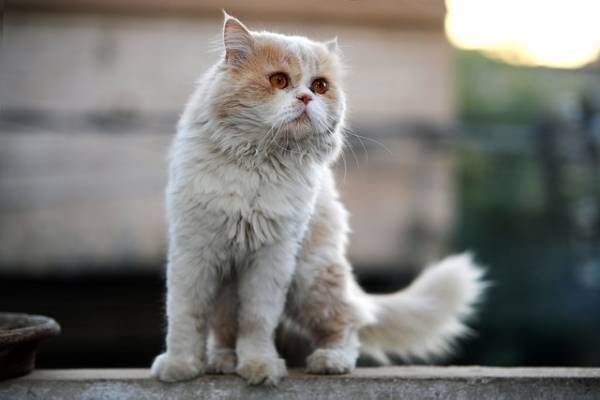
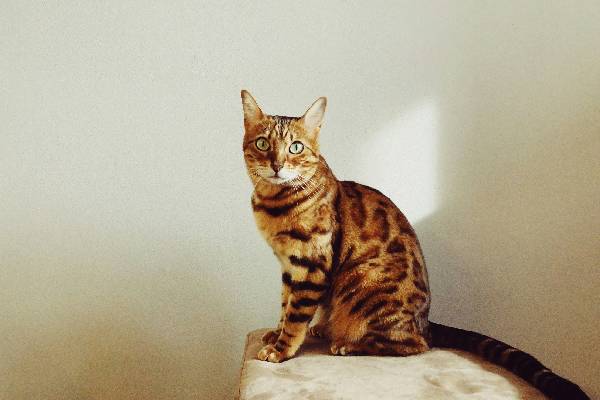
The world of cats is as diverse as it is fascinating, with some breeds being extraordinarily rare and others admired for their sheer beauty. Understanding what makes a cat breed rare or exceptionally pretty not only deepens our appreciation for these remarkable animals but also highlights the dedication of breeders and enthusiasts in preserving these unique traits. Let’s delve into the world of rare and pretty cat breeds and explore what makes them stand out.
What is the 1 Rarest Cat?
Highlighting Some of the Rarest Cat Breeds in the World
Rarity in cat breeds can be attributed to a variety of factors, including limited breeding, genetic uniqueness, and even their endangered status in the wild. Below are a few of the rarest cat breeds that capture the attention of cat lovers around the world.
Ashera:
The Ashera is often cited as one of the rarest and most expensive cat breeds in the world. It is a hybrid breed, developed by crossing a domestic cat with an Asian leopard cat and a serval. The result is a large, exotic-looking cat with striking leopard-like spots and a wild appearance.
Due to its complex breeding process and the fact that only a few Ashera cats are bred each year, this breed is extremely rare and commands a high price, sometimes reaching tens of thousands of dollars.
Sokoke:
Originating from the Arabuko Sokoke forest in Kenya, the Sokoke cat is considered one of the rarest cat breeds due to its limited population and unique history. This breed was only discovered in the 1970s and is characterized by its distinctively marbled coat and wild appearance.
Despite its wild looks, the Sokoke is a friendly and social breed, though it remains rare outside of its native region due to its limited gene pool and the challenges of breeding.
Khao Manee:
Known as the “Diamond Eye” cat, the Khao Manee is a rare breed from Thailand that has been revered for centuries. This breed is distinguished by its pure white coat and striking eyes, which can be blue, gold, or even odd-eyed (one blue, one gold).
The Khao Manee was historically kept by royalty in Thailand and was not widely known outside the country until recently. Its rarity is due in part to the fact that purebred Khao Manee cats are still relatively uncommon, especially outside of Thailand.
Factors That Contribute to Their Rarity
Several factors contribute to the rarity of these cat breeds:
Limited Breeding:
Some breeds, like the Ashera, are rare because they are intentionally bred in limited numbers. This controlled breeding keeps the population small and exclusive, often resulting in high prices and a status symbol among cat enthusiasts.
Geographic Isolation:
Breeds like the Sokoke and Khao Manee are rare because they originate from specific regions and were not widely known or distributed outside their native areas until recently. Geographic isolation has kept these breeds’ populations low, contributing to their rarity.
Endangered Status:
In some cases, a cat breed may be rare due to its endangered status in the wild or a shrinking population in its native environment. Conservation efforts can sometimes help preserve these breeds, but their numbers often remain low, making them rare and highly sought after.
Who is the Prettiest Cat?
Debating the Prettiest Cat Breeds According to Various Cat Enthusiasts
Beauty, as they say, is in the eye of the beholder, and this is certainly true when it comes to cats. Different cat enthusiasts have varying opinions on what constitutes the “prettiest” cat breed, but a few breeds are consistently celebrated for their striking looks.
Siamese:
The Siamese cat is often considered one of the most beautiful cat breeds, known for its sleek, slender body, striking blue almond-shaped eyes, and distinctive color points on the ears, face, paws, and tail.
Siamese cats are well-liked all around the world due to their graceful and majestic beauty. Their beauty is further enhanced by their graceful movements and expressive faces, making them a favorite among cat lovers.
Abyssinian:
Another breed that is highly praised for its beauty is the Abyssinian cat. With its lithe, muscular body and short, ticked coat that appears to shimmer in the light, the Abyssinian has an exotic and wild look reminiscent of ancient Egyptian cats.
The breed’s large, expressive eyes and alert, upright ears add to its striking appearance. Abyssinians are not only beautiful but also known for their playful and inquisitive nature, which endears them to their owners.
Persian:
The Persian cat is the epitome of feline beauty for many people, with its long, luxurious coat and sweet, round face. Persians come in a variety of colors and patterns, but all share the breed’s signature flattened face and large, expressive eyes.
Their calm and gentle demeanor, combined with their stunning appearance, makes Persians one of the most popular and beloved cat breeds in the world.
Examples of Breeds Known for Their Beauty:
Bengal:
The Bengal cat is famous for its wild appearance, with a coat that features large rosettes, spots, or marbling reminiscent of a leopard or ocelot. The Bengal’s exotic look, combined with its athletic build and confident personality, makes it one of the most visually striking cat breeds.
Russian Blue:
Known for its plush, silvery-blue coat and vivid green eyes, the Russian Blue is often regarded as one of the prettiest cat breeds. The breed’s sleek, graceful body and serene expression contribute to its elegant and refined appearance. Russian Blues are also known for their gentle and reserved temperament, which complements their sophisticated look.
Maine Coon:
The Maine Coon, one of the largest domesticated cat breeds, is admired for its impressive size, tufted ears, and bushy tail. Their friendly and gentle nature, combined with their rugged good looks, makes them a favorite among cat enthusiasts. Maine Coons come in a wide range of colors and patterns, and their long, flowing coat adds to their majestic appearance.
In conclusion, the world of rare and unique cat breeds offers a fascinating glimpse into the diversity and beauty of domestic cats. Whether you are drawn to the exclusivity of rare breeds like the Ashera and Khao Manee or the timeless beauty of breeds like the Siamese and Abyssinian, there is a cat for every aesthetic preference.
Cat enthusiasts worldwide are captivated by the distinct personalities and allure of each cat, despite the rarity and beauty of these breeds making them stand out.
Loving and Intelligent Cats: The Best Companions
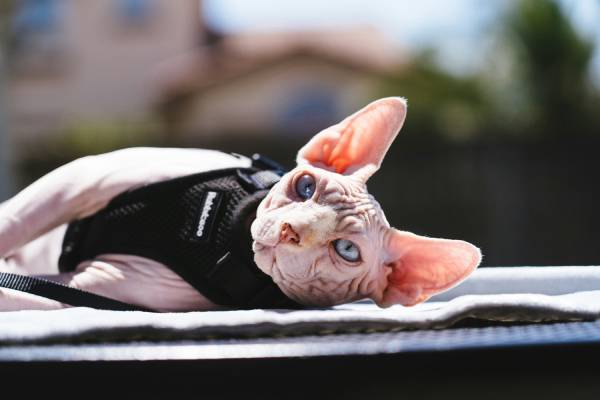
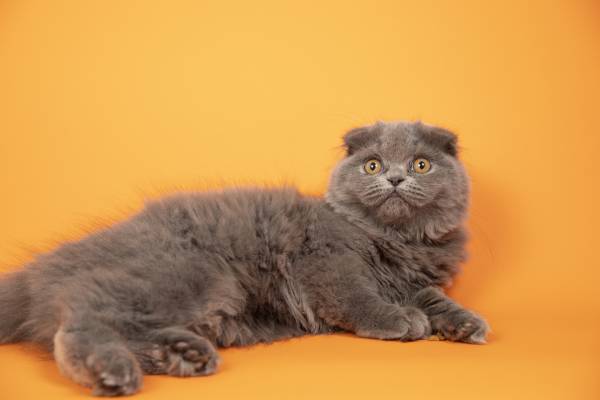
Cats have long been cherished for their unique blend of independence and affection. Some breeds are renowned not only for their loving nature but also for their intelligence, making them exceptional companions. In this section, we’ll explore which cat breeds are the most loving and the smartest, and provide tips on how to nurture a deep bond with your feline friend.
Which Cat is the Most Loving?
Recognizing Cat Breeds Known for Their Adorable Character
Certain cat breeds are particularly well-regarded for their affectionate and loving personalities. These cats are known to form strong bonds with their human companions and often seek out attention and companionship.
Ragdoll:
Ragdolls are often described as “puppy-like” due to their tendency to follow their owners around and seek out affection. They are known for their gentle and laid-back nature, making them ideal for families and individuals looking for a loving companion.
Ragdolls are characterized by their large size, soft semi-long fur, and striking blue eyes. They often enjoy being held and cuddled, and they tend to go limp when picked up, which is how they got their name.
Burmese:
Burmese cats are renowned for having gregarious and loving dispositions. They take pleasure in participating in family activities and are very gregarious. Burmese cats have a sleek, muscular build and a short, shiny coat that comes in a variety of colors.
Their playful and loving nature makes them excellent companions, and they are known to form strong attachments to their owners, often seeking constant attention and interaction.
Scottish Fold:
The Scottish Fold is another breed known for its affectionate demeanor. This breed is easily recognizable by its unique folded ears and round face. Scottish Folds are gentle and easygoing, and they enjoy being close to their human companions.
They are known to be adaptable and often get along well with children and other pets, making them a popular choice for families.
Tips for Building a Loving Relationship with Your Cat
To foster a loving relationship with your cat, consider the following tips:
Spend Quality Time:
Regularly engage with your cat through playtime, petting, and cuddling. Interactive toys, such as feather wands or laser pointers, can provide physical and mental stimulation, strengthening your bond.
Create a Safe and Comfortable Environment:
Ensure your cat has a cozy and safe space where they can retreat and feel secure. A comfortable bed, scratching posts, and climbing structures can help create a nurturing environment.
Respect Their Boundaries:
While affectionate cats enjoy human interaction, it’s important to respect their personal space and preferences. Let your cat come to you when they’re ready and don’t push conversations.
Positive Reinforcement:
When your cat behaves well, give them goodies, compliments, or affection. Positive reinforcement can help build trust and encourage a loving relationship.
Who is the Smartest Cat?
Discussing Breeds Renowned for Their Intelligence
Intelligence in cats can be observed through their problem-solving abilities, trainability, and interactive behaviors. Some cat breeds are known for their high intelligence and can perform impressive feats of learning and adaptation.
Abyssinian:
The Abyssinian is one of the most intelligent cat breeds, known for its curiosity and problem-solving skills. Abyssinians are highly active and enjoy exploring their environment.
They pick things up quickly and can be taught tricks or how to use puzzle toys. Their intelligence also manifests in their ability to engage with interactive toys and find creative ways to entertain themselves.
Sphynx:
The Sphynx, a hairless breed known for its distinctive appearance, is also recognized for its intelligence and playful nature. Sphynx cats are highly social and enjoy interactive play.
They are quick learners and can be trained to perform tricks or use toys that challenge their cognitive skills. Their intelligence is often reflected in their inquisitive behavior and ability to adapt to new situations.
Cornish Rex:
The Cornish Rex is another breed noted for its intelligence and agility. With its unique curly coat and slender body, the Cornish Rex is not only striking in appearance but also highly trainable.
This breed enjoys mental stimulation and can learn complex behaviors and tricks. Their intelligence is evident in their ability to solve problems and engage in interactive play.
Examples of Clever Cat Behaviors:
Puzzle Solving:
Intelligent cats often enjoy puzzle toys that require them to solve problems to obtain a treat. For example, puzzle feeders or treat-dispensing toys challenge their cognitive skills and provide mental stimulation.
Learning Tricks:
Some cats can be trained to perform tricks such as sit, high-five, or even fetch. Breeds like the Abyssinian and Sphynx are particularly adept at learning new behaviors and responding to training.
Exploration and Adaptability:
Intelligent cats are often curious and enjoy exploring their surroundings. They may find creative ways to access high shelves or open doors, showcasing their problem-solving abilities.
Interactive Play:
Cats that are intelligent and socially engaged may exhibit behaviors such as playing fetch or using toys that require manipulation. Their ability to interact with their environment in complex ways highlights their cognitive skills.
In conclusion, cats are incredibly diverse in their personalities and abilities. Whether you’re looking for a loving companion like the Ragdoll or Burmese, or a clever and interactive friend like the Abyssinian or Sphynx, there is a cat breed that can fit your needs and preferences.
Building a loving relationship and recognizing their intelligence can enhance your bond with your feline friend, making them not only a cherished pet but also a delightful and engaging companion.
The Most Expensive Cats in the World
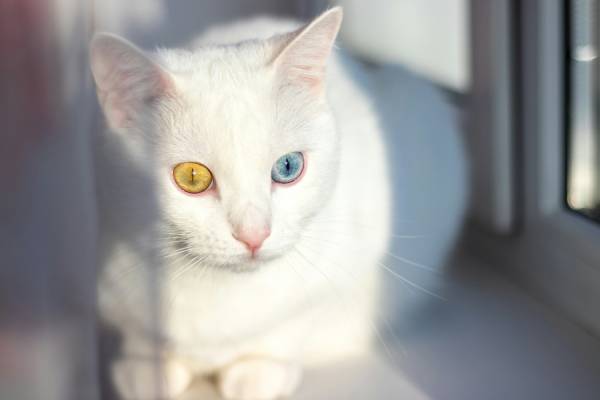
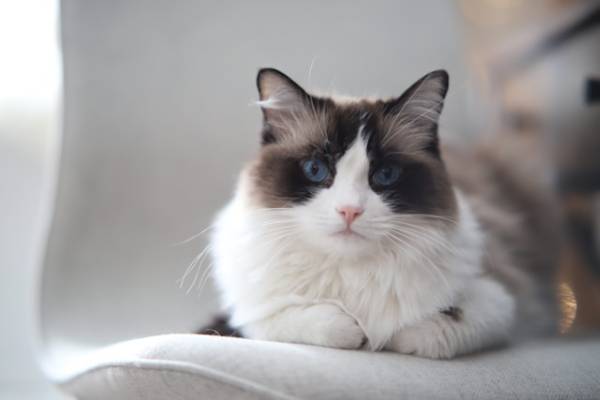
The world of high-end feline companionship includes some of the most extravagant and exclusive cats, with prices that can reach tens of thousands of dollars. These high costs are driven by a combination of rarity, demand, and the complexity of breeding. Let’s explore some of the most expensive cat breeds and understand the factors contributing to their high prices.
What is the Most Expensive Cat?
Listing Some of the Priciest Cat Breeds:
Ashera:
- Price: Up to $125,000
- Description: The Ashera is often cited as one of the most expensive cat breeds in the world. It is a hybrid breed created by crossing a domestic cat with an Asian leopard cat and a serval. This breed is known for its striking appearance, which includes large spots and a sleek, wild look reminiscent of a leopard. The Ashera’s high price is due to its rarity, the complexity of its hybrid breeding, and the fact that it is considered a luxury item.
Savannah:
- Price: $10,000 – $20,000
- Description: The Savannah cat is another high-priced breed, known for its exotic appearance and large size. This hybrid breed results from crossing a domestic cat with a serval, a wild African cat. Savannahs are admired for their striking spotted coats and their resemblance to wild cats. The cost of a Savannah cat varies depending on its generation (F1, F2, etc.), with the first-generation hybrids being the most expensive. Their high price is driven by the complexity of the breeding process, legal restrictions, and their unique appearance.
Bengal:
- Price: $1,000 – $4,000
- Description: Bengals are known for their beautiful, leopard-like markings and vibrant coat patterns. They are a hybrid breed, created by crossing a domestic cat with an Asian leopard cat. The Bengal’s striking appearance and energetic personality contribute to its high price, though it is less expensive than the Ashera or Savannah. Factors influencing the cost include the pedigree, coat pattern, and breeding quality.
Discussing What Factors Drive Their High Costs:
Rarity:
- Limited Breeding: Many of the most expensive cat breeds, such as the Ashera and Savannah, are rare due to the limited number of breeders and the challenges associated with producing these hybrids. The rarity of these breeds makes them highly sought after, driving up their price.
- Geographic Availability: Some high-priced breeds may be rare or restricted in certain regions due to legal or environmental reasons, further contributing to their exclusivity and high cost.
Demand:
- Celebrity and Luxury Status: The appeal of owning a rare and exotic cat often aligns with status symbols and luxury. Breeds like the Ashera are marketed as exclusive and high-status pets, which enhances their demand among wealthy individuals.
- Unique Appearance: The exotic looks and striking features of breeds like the Savannah and Bengal attract buyers who are willing to pay a premium for a cat that stands out from the more common domestic breeds.
Breeding Complexity:
- Hybridization Process: The breeding process for hybrid cats, such as the Ashera and Savannah, involves crossing domestic cats with wild feline species. This process is complex and requires specialized knowledge and careful management, contributing to the high cost. Additionally, hybrid cats often require more rigorous health testing and care, further increasing their price.
- Health and Genetic Testing: High-quality breeding practices include extensive health screenings and genetic testing to ensure the health and well-being of the cats. The cost of these tests and the effort to maintain a high standard of breeding contribute to the overall price of the cat.
Legal and Regulatory Issues:
- Permits and Regulations: In some regions, owning hybrid or exotic cats requires special permits and adherence to strict regulations. The legal complexities and additional costs associated with obtaining and maintaining these permits can influence the price of the cat.
- Ethical Considerations: There may be ethical considerations and concerns about the breeding and sale of exotic or hybrid cats, which can impact their market price and availability.
In conclusion, the most expensive cats in the world are characterized by their rarity, unique appearance, and the complex breeding processes required to produce them. The Ashera, Savannah, and Bengal are prime examples of high-priced feline companions, each with its own set of factors contributing to their high costs.
Whether driven by luxury status, exotic looks, or breeding challenges, these cats represent a significant investment and a symbol of exclusivity in the world of pet ownership.
Conclusion
In exploring the captivating world of cats, we’ve delved into their myriad characteristics, from their adorable and affectionate nature to their intelligence and high market value. Each aspect of this diverse feline world highlights the unique charm that cats bring to our lives.
Choosing the perfect cat for your home involves careful consideration of various factors, including personality, size, care requirements, and even budget. It’s essential to assess how a cat’s traits align with your lifestyle and preferences to ensure a harmonious and fulfilling companionship.
Before making a decision, consider visiting shelters or breeders, researching specific breeds, and understanding the responsibilities of cat ownership. Each cat brings its own unique qualities, and finding the right match can enhance the joy and satisfaction of having a feline friend. Accept the allure and diversity of felines, and select a friend who will make a meaningful contribution to your life and grow to be a cherished member of your family.
Contact Us for any Question related to this Article.
Frequently Asked Questions
1. What makes a cat cute?
A cat’s cuteness often stems from a combination of physical and personality traits. Physically, cats with big eyes, small noses, and fluffy fur are typically considered more adorable. Personality traits such as playfulness, affection, and a friendly demeanor also contribute to a cat’s cuteness. Additionally, kittens, with their small size and playful behavior, often enhance their appeal.
2. What are some of the cutest cat breeds?
Several cat breeds are known for their cuteness. Among them:
- Persian: Known for their long, luxurious fur and flat faces, Persian cats have a distinctive, charming appearance.
- Scottish Fold: Famous for their unique folded ears and sweet, round faces, Scottish Folds are gentle and affectionate.
- Ragdoll: Recognizable for their large size and striking blue eyes, Ragdolls are known for their calm and loving nature.
3. Who is the world’s cutest cat?
Famous cats recognized for their cuteness include:
- Grumpy Cat: Known for her distinctive frown, Grumpy Cat gained fame for her unique and expressive face.
- Nala Cat: With her large, round eyes and playful personality, Nala Cat has become an internet sensation.
4. What is the cutest cat’s name?
Popular names for cute cats often reflect their charming appearance or personality. Examples include:
- Whiskers: A classic and endearing name for any cat with prominent whiskers.
- Snowball: A cute name for a white or fluffy cat.
- Bella: A common name that means “beautiful,” fit for any stylish cat.
5. Why are cats so cute?
The perception of cats as cute is influenced by their physical features and behaviors. Evolutionary, humans are drawn to baby-like traits, such as large eyes and small noses, which cats often possess. Additionally, cats’ playful and affectionate behaviors can evoke feelings of warmth and joy, enhancing their overall cuteness.
6. What are big cats, and which breeds are considered big cats as pets?
Big cats are larger-than-average domestic cats that often have a more striking or wild appearance. Some notable breeds include:
- Maine Coon: Known for their large size, tufted ears, and friendly disposition.
- Savannah: A hybrid breed with a striking appearance and a large size, created by crossing a domestic cat with a serval.
- Bengal: Recognizable for its leopard-like spots and muscular build.
7. What are the pros and cons of owning a big cat?
Pros:
- Impressive Appearance: Big cats often have striking and unique looks.
- Distinctive Features: They could differ from lesser breeds in terms of personalities and actions.
.
Cons:
- Space Requirements: Larger cats need more space to move and play comfortably.
- Special Care: They may require specialized care and more attention to their health and diet.
- Legal Considerations: Some big cats, particularly hybrids, may be subject to legal restrictions or require special permits.
8. What colors can cats see?
Compared to humans, cats’ color vision is more limited. They primarily see shades of blue and green, but they have difficulty distinguishing between red and pink. Their vision is adapted for detecting movement and low-light conditions, which is advantageous for hunting.
9. What are some of the rarest cat breeds in the world?
Some of the rarest cat breeds include:
- Ashera: A hybrid breed with a unique, exotic appearance, often costing up to $125,000.
- Sokoke: A Kenyan breed distinguished by its unique coat and scarcity
- Khao Manee: Known for its all-white coat and rare genetic makeup.
10. Which cat breed is considered the prettiest?
Opinions on the prettiest cat breed can vary, but some frequently mentioned breeds include:
- Siamese: Known for their striking blue eyes and elegant, slender bodies.
- Abyssinian: Recognized for their beautiful, ticked coat and graceful appearance.
- Persian: Famous for their luxurious fur and unique face shape.
11. Which cat breeds are the most loving?
Breeds known for their affectionate nature include:
- Ragdoll: Known for their calm and loving disposition, often seeking out human attention.
- Burmese: Outgoing and social, Burmese cats enjoy being involved in family activities.
- Scottish Fold: Gentle and friendly, Scottish Folds are known for their affectionate behavior.
12. What are the smartest cat breeds?
Smart cat breeds include:
- Abyssinian: Highly curious and quick learners, often engaging in problem-solving and interactive play.
- Sphynx: Known for their playful and intelligent nature, easily learning tricks and interactive games.
- Cornish Rex: Agile and intelligent, Cornish Rex cats enjoy mental stimulation and can be trained to perform complex behaviors.
13. What factors drive the high cost of some cat breeds?
The high cost of certain cat breeds is influenced by:
- Rarity: Limited availability and the complexity of breeding contribute to higher prices.
- Demand: High demand for exotic or unique breeds can drive up costs.
- Breeding Complexity: Hybrid breeds often require specialized knowledge and breeding practices, adding to their price.
- Legal and Regulatory Issues: Some breeds may require special permits or face legal restrictions, impacting their market price.
